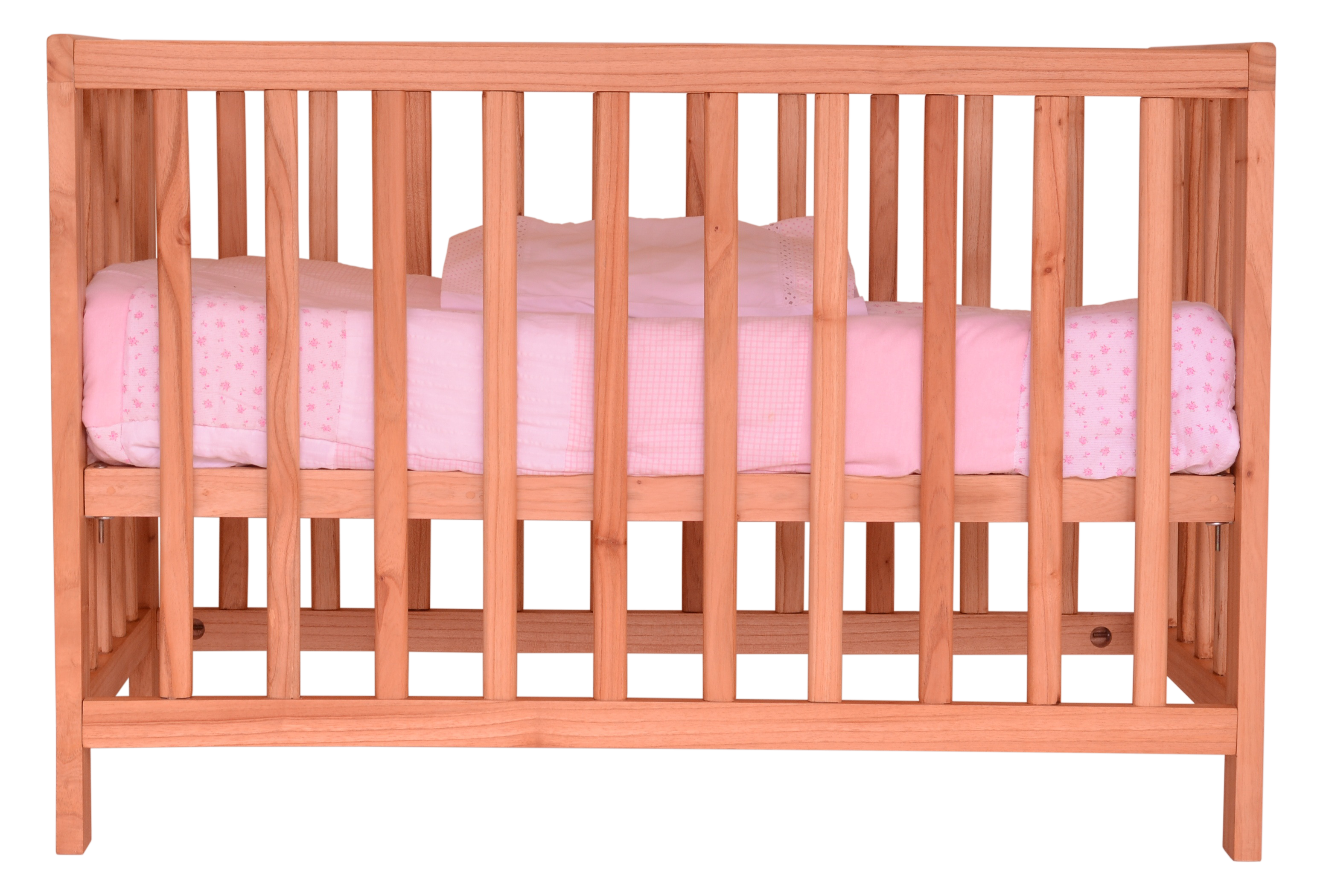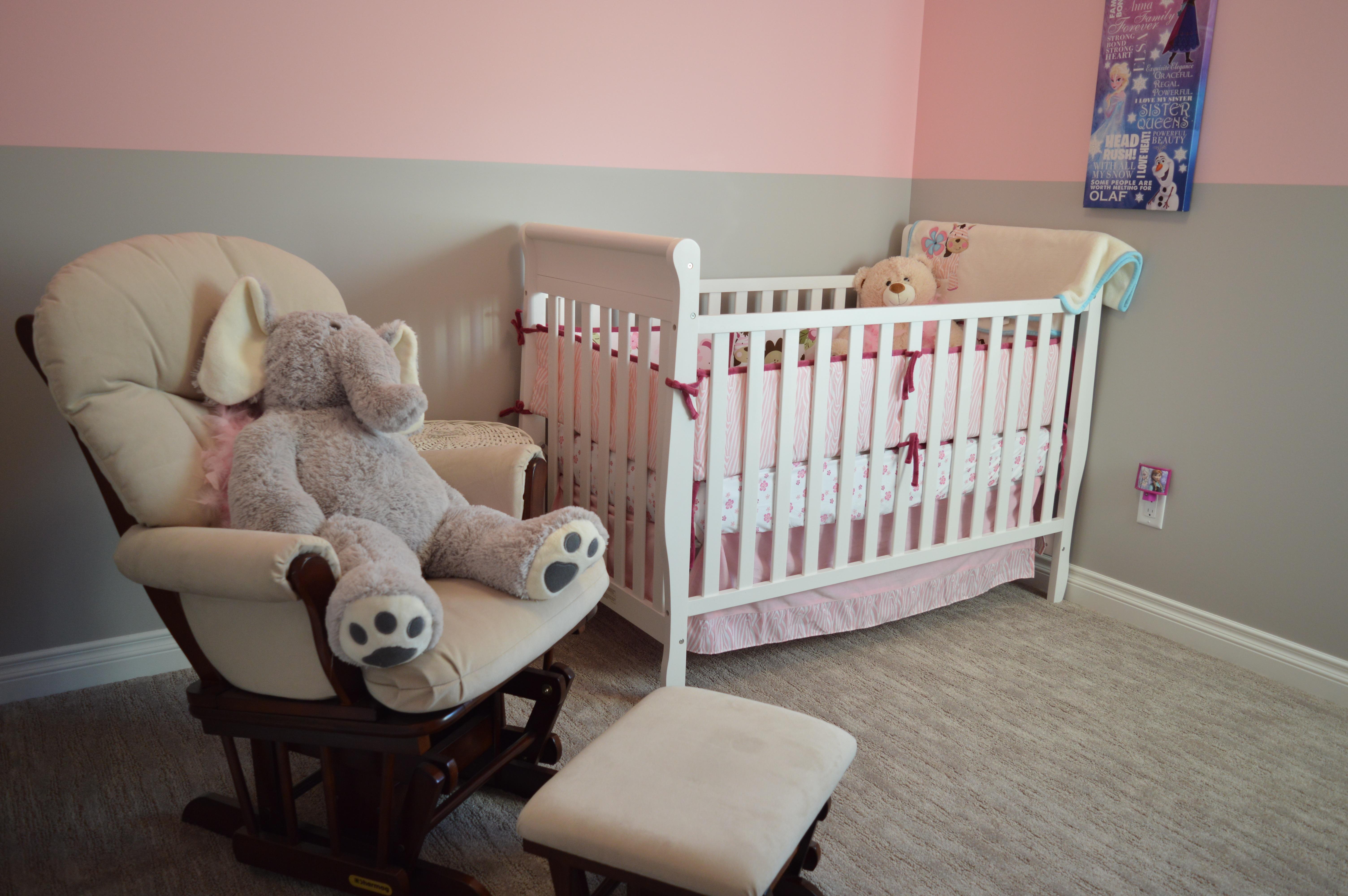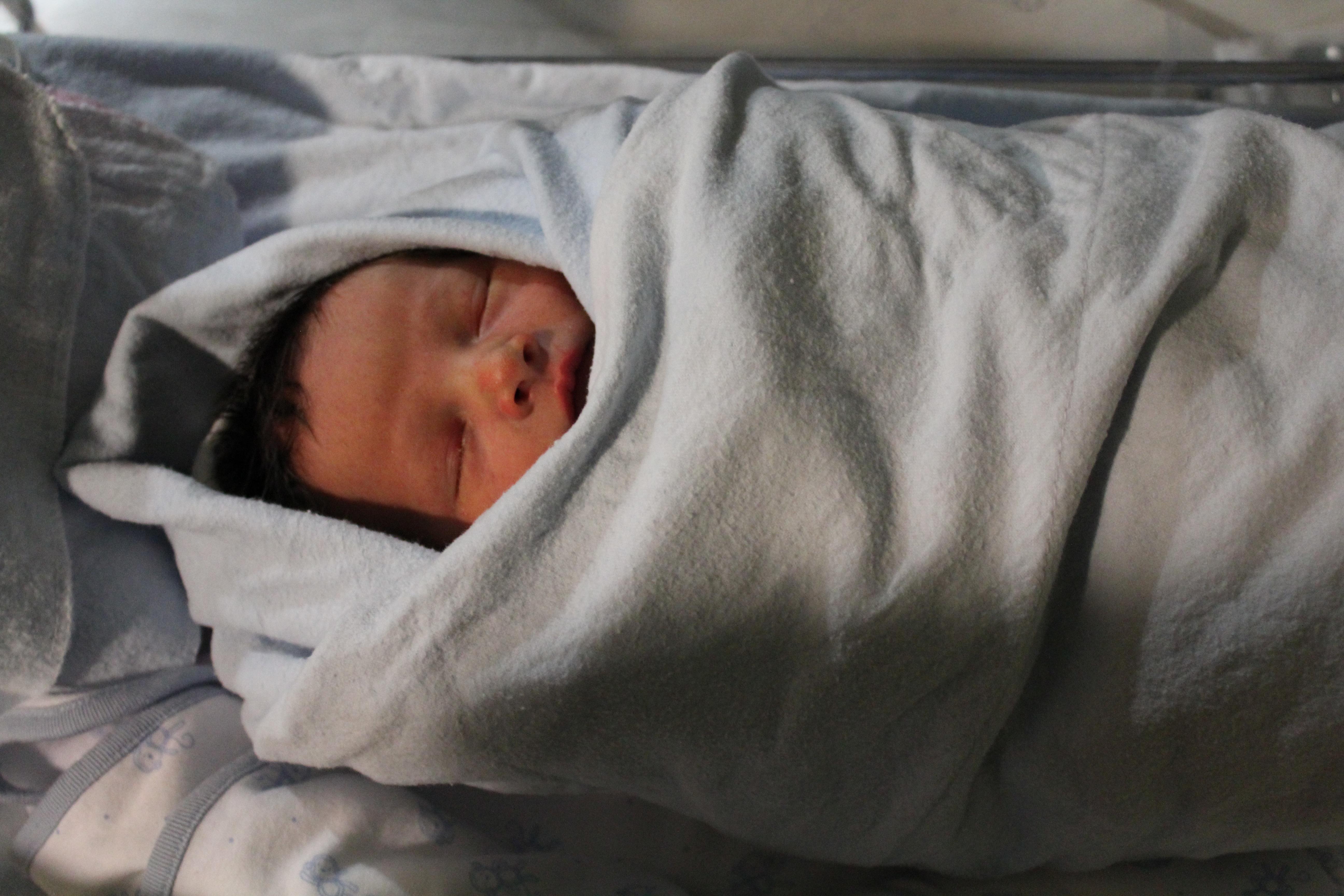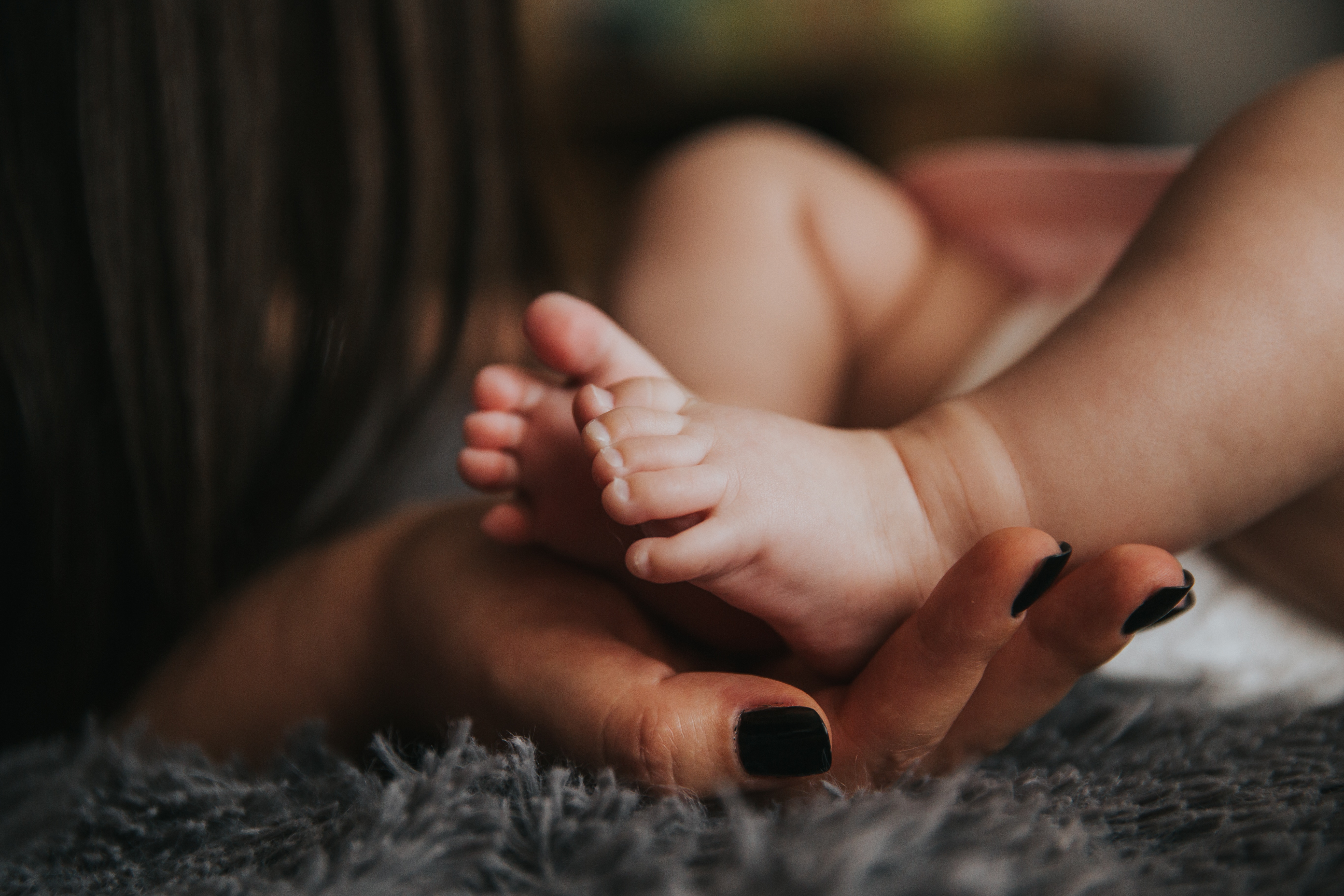Table of Contents
How To Get Newborn To Sleep In Bassinet
How to get newborn to sleep in the bassinet? If you’re reading this with one hand while your baby sleeps peacefully on your chest and you need to get up to pee, straighten your crooked neck, feed your growling stomach, or just lie down and rest, you’ve come to the right place to learn how to get newborn to sleep in the bassinet.
The newborn stage is even more difficult when your child wants to nap on you & you alone. Today you will learn how to get newborn to sleep in the bassinet rather than in your arms.
Of course, these are moments to cherish, and you do. But wouldn’t it be fantastic if your tiny darling just napped in that lovely bassinet you spent so much time selecting?! Only on rare occasions?
But you’ve almost given up; the dreaded bassinet transfer is always a failure, and your newborn wakes up as soon as you set her down, her tiny eyes popping open, asking to get back on your chest or in the bend of your arms.
So you sit still, coffee out of reach, neck awkwardly pressed to the side, sweltering beneath that tiny furnace of a human person. And then wait.
But don’t worry, there are now some real solutions. By the end of this post, you’ll know how to get your newborn to sleep in the bassinet.
Why is my baby not sleeping in the bassinet?

How to get newborn to sleep in the bassinet? Before we get into the details, let’s look at the most likely reasons your baby won’t sleep in the bassinet and prefers to sleep in your arms. Then it’s pretty clear why the bassinet isn’t even close. It has to do with the big difference between your baby’s environment before birth and the big wide world:
- Inside you: Your baby was snug and warm inside you, where it was tightly coiled, and you could hear the steady rhythmic sounds of your body even though it was completely dark.
- Out in the big world: Your baby is subjected to bright lights, cold drafts, and much freedom for their flailing arms and legs. There are also a lot of smells.
Your baby’s bassinet is probably in a warm, cozy room, and the lights should be turned down. But it’s a long way from feeling your arms around you, your heartbeat, and your chest rising and falling.
To get your baby to sleep or nap without being held, attempt to imitate the calming and soothing sensations that kept the baby comfortable in the womb. We’ll get to the specifics of these a little later.
The “4th trimester” – its effect on sleep and the baby’s ability to fall asleep
Not only is your baby’s world turned upside down at birth, but there is a prevalent assumption that infants would have been better off lingering in the womb for an extra three months. It would allow for additional development and ease the transition.
As you’ve probably noticed, the baby needs constant food and nurturing throughout the first three months, also known as the “newborn phase.” So much so that it resembles gestation but occurs outside of the womb, hence the term “fourth trimester.”
Based on the developmental growth of a newborn during this stage, this seemingly early introduction into the world makes life difficult for both the baby and the mother.
How to get newborn sleep in bassinet: Sight
At birth: The baby has difficulties focusing and cannot track an object.
By 3 months: Can focus on, follow, and identify moving objects and people.
How to get newborn sleep in bassinet: Movement and coordination
At birth: Reflexes in newborns allow them to move in a controlled way in response to certain stimuli, but other movements are random and not coordinated.
By 3 months: They use their hands and eyes together, such as by holding, grabbing, and putting their hands to their mouths. They can also support their head and lift it when lying on their front.
How to get newborn sleep in bassinet: Social skills
At birth: communication of needs through tears.
By 3 months: Smiles when joyful (before social smiling, babies have a “windy” smile, an early wind cue, one of many must-know baby cues), imitates and babbles.
How to get newborn sleep in bassinet: Sleep
At birth: Variable sleep patterns, short naps, long naps, and everything in between, irregular sleep cycles, a lot of “active” sleep (similar to REM sleep in adults when the brain is very active), so the baby is quickly disturbed and wakes, baby drifts easily between sleep cycles
Around 3 months: The baby’s sleep starts to change. Sleep patterns become more predictable, and cycles have less “active” sleep. However, the baby is likely to wake up between cycles.
Self-settling (i.e., the ability of a baby to soothe herself when distressed and settle herself to sleep)

At birth: When the baby is upset, she needs help to calm down, and she often needs help falling asleep and returning to sleep when she wakes up.
Around 3 months: Baby can comfort herself (by actively seeking to suck on fingers, thumb, paci, avoid stimulus by moving head away and focusing into space) and fall asleep on her own (although she may need encouragement at first)
So, why do babies have to struggle through the fourth trimester?
If you thought giving birth was hard, think about what it would be like to wait an extra 3 months before starting. Yeah, neither do we. Our big brains signal that we have to leave early.
How to get a newborn to sleep (principles of settling & soothing)
We know You want to know how to get newborn to sleep in the bassinet instead of your arms and how to keep the baby from waking up when you put her down.
You need to know how to make your baby feel like he or she is in the womb. It is the 1st step to getting your baby to sleep anywhere, including in the bassinet.
Calming & soothing sensations Vs. Stimulating & irritating ones – sense by sense
VISUALS
There is very little light in the womb.
Soothing on the eyes
Soft pastels and muted colors, with low lighting.
Visuals that stimulate
Bright colors and lights can annoy a newborn, but he or she will enjoy looking at shapes and contrasting images (especially faces) while learning to focus.
SOUND
Your heartbeat and gurgling, whooshing sounds from within. The volume is slightly louder than that of a vacuum cleaner.
Soothing sounds
White noise with a gentle beat and a soft consistency.
Sounds that stimulate
Odd sounds and loud noises may stimulate and irritate.
TOUCH
The newborn is surrounded by the warm, intimate confines of the womb.
Soothing touch
Deep-touch pressure, particularly to the back, at a soothing temperature
Touch that stimulates
- rough surfaces
- gentle touches
- a gentle breeze
- hot and cold sensations
- unusual touches
MOVEMENT
During pregnancy, the baby is frequently moved and rocked, with major motions as you walk around and much smaller movements all the time owing to pressure from the diaphragm as you breathe.
Soothing movement
Gentle, rhythmic movements will be soothing, especially to the front or side.
Movement that stimulates
Irregular, fast, and jerky motions will alert or even irritate.
TASTE & SMELL
The baby is used to the amniotic fluid, which has no smell or taste.
Soothing tastes & smell
The sweet taste of breast/formula milk
Soothing smells: Mom and mom’s milk (or colostrum, which comes before milk), the smell of dad or other regular caregivers, and baby’s smell and saliva are all soothing smells.
Smells that stimulate
Your baby will be interested in new and different smells, but they can also easily bother it. Your baby might suckle, cry, or breathe faster if it smells something strong or unpleasant or smells too many new things at once.
Since the baby only drinks milk, taste doesn’t matter.
POSITION

The baby was in all kinds of strange positions in the womb, mostly lying on its side or stomach, but when it was close to being born, it usually moved to the head-down position.
Soothing positions
Side or stomach sleeping positions are best, not only because they are most like how the baby was in the womb but also because they help ease discomfort caused by gas.
Positions that can stimulate or irritate their backs.
“Back to Sleep” (front and side-sleeping run the highest risk of SIDS).
Use the side of the stomach lying positions to soothe and calm only –once the baby is asleep, slowly roll her onto her back.
SUCKING
Sucking is not a sense in and of itself, but the act of sucking combines some soothing sensations that can help calm and settle a newborn.
Surprisingly, sucking on the thumb and fingers can start before birth. The rooting and sucking reflex is set off when your fingers or thumb touch your mouth.
Sucking is very calming and soothing on its own. Add that to the sweet taste of breastmilk & the smell of mom or another caretaker close by, and you have almost an instant calmer.
How to get newborn to sleep in the bassinet
How to get newborn to sleep in the bassinet: As previously stated, getting your newborn to sleep in a bassinet begins with going back to basics and nailing those womb-like sensations to soothe, relax, prepare for, and eventually help induce sleep. These are addressed in the first few points.
#1 Swaddle
After being tightly curled up in the womb for so long, your baby will feel very uneasy having full use of arms and legs. Swaddling limits how much a baby can move and makes deep pressure touch, which calms and settles the baby. It brings back the feeling of security that the baby was used to in the womb.
Swaddling also has an important secondary purpose: it stops the Moro reflex, a natural newborn response that has no use in modern times and can startle your baby awake in a nanosecond.
If your newborn wakes up as soon as you place her in the bassinet, it could be because you didn’t swaddle her well. So get swaddling!
How to get newborn sleep in bassinet: Top swaddle tips
- A good swaddle should keep the baby safe and snug, with just enough room for two fingers at the chest.
- You can practice on a friend’s baby, a doll, or your baby when he or she is sleeping.
- Babies often scream when they see the swaddle, but that doesn’t mean they don’t like it. Once it’s on and snug, you should immediately find that baby calms down.
- For babies who like to get out, ensure their arms are straight and flat against their sides or try swaddling them twice.
- Don’t know how to make baby burritos? Try a trendy swaddle that does all the hard work for you. There are plenty of these in the market and some great reviews with no sugarcoating.
- For hip-healthy swaddling, give the hips and legs a lot of room to move.
#2 Ensure that the baby’s sleeping environment is ideal.

The baby’s sleep environment, i.e., the room in which the bassinet is, should be pitch dark with a good dosage of white noise to mimic the visual and acoustic sensations experienced in the womb.
1. Pitch black
In other words, it’s so dark that you can’t see your hand in front of your face. Don’t forget that the baby came from complete darkness, so the dark is comforting. Even during the day, the sleep zone needs to be completely dark. Your baby will still be able to tell the difference between day and night.
2. White noise
White noise best matches the intensity and type of sounds your baby would have experienced in the womb. But not all white noise is the same; it must be:
- low-pitch
- loud around 60-75 decibels
When it comes to white noise specifically created to quiet, soothe, and create the perfect noisy sleep zone for babies, there are many options on YouTube and streaming services like Apple Music. Just make sure you turn it up high enough.
3. Adopt a good wind-down routine
Start winding down 5-10 minutes before a nap or sleep or when the infant begins to exhibit sleepiness. Wind-down should be brief, sweet, peaceful, relaxed, and readily repeated so that it gradually signals your newborn that it’s time to sleep.
The first step is to create that magical sleep zone and wrap it around the baby:
- Take baby to her sleeping room or similar calm environment, keeping the lights dim while you relax.
- Check and replace the diaper as needed.
- Swaddle baby
- Turn on the white noise.
(Once you’ve started washing baby daily, you can include a bath at the start of your wind-down routine; the above stages would come after the bath.)
Then it’s time to add other soothing sensations like movement and smell and let the baby suck. If she’s a baby who likes to suck and finds it soothing:
- Rock, swing, and sway while keeping baby close – you’ll almost definitely be doing this anyway because it’s our instinct as mothers to do so.
- Give baby one last breastfeed, bottle feed, or pacifier.
You can do this until the baby falls asleep but is still awake or until the baby is completely sleeping.
In case you’re wondering, there’s no chance of sleep associations emerging by assisting the infant in sleeping throughout the fourth trimester – they only emerge as sleep begins to mature at around 3-4 months.
The last step:
- Put the baby in her bassinet, say good night, and leave the room quickly and quietly.
Of course, this is where you’re going to get stopped – but this is what you’re aiming for, and you’ll get there.
#4. Try initiating the “Calming Reflex.”
How to get newborn sleep in bassinet: Standard wind-down techniques may not be effective with a fussy, uncomfortable, or overtired newborn. It means that you may easily get the baby to go asleep in your arms, but the newborn wakes up as soon as you set her down.
The 5 S’s method
The 5s method, when carried out together and in a particular way, should trigger a newborn’s calming reflex. It kind of sends the baby into a trance, instantly calming it and inducing sleep.
The 5s are as follows:
- Swaddle
- Side or stomach position
- Shush
- Swing
- Suck
Swaddling, shushing (through white noise), swinging motion, and sucking are all covered under the magical sleep zone and the wind-down time.
The swing or “Jell-O head jiggle.”

Slow, gentle movements won’t calm a fussy baby, but small, quick movements, like the Jell-O head jiggle, will:
“The Jell-O head jiggle is a key way to calm many babies. To do it, always support the head or neck, move slowly, and don’t move more than an inch back and forth.”
You may find that the 5 S’s are so good at putting baby to sleep that it will be easier to move her to her bassinet. If not, don’t worry, because there are other things to try.
#5 Introduce your and baby’s smell into the bassinet
Your smell
How to get newborn to sleep in the bassinet: Safe sleep rules say there shouldn’t be any loose items in the bassinet with the baby. However, as an extra sheet, you can easily add a familiar smell by putting an unwashed pillowcase or large T-shirt in the bassinet. Tuck the ends of the burp sheet under where your baby will be sleeping, along the sides of the mattress.
It also works as a “burp sheet,” which is great if you have a baby who spits up a lot or has reflux. Instead of changing the whole sheet, you can often get away with just changing the top sheet, pillowcase, or T-shirt.
Baby’s smell
The smell of mom and dad is soothing and comforting to babies, but the baby’s smell can also do the trick. The key is not to wash bedsheets and jammies for your baby too much. You don’t want the baby’s bassinet to smell like sour milk, but a little dribble here and there can give the baby a sense of comfort and help her sleep.
Also, put your baby in the bassinet when he or she is not sleeping. It will give her more freedom to move into the bassinet and help her feel more at ease in this environment.
#6 Warm up the bassinet or use a washcloth.
How to get newborn sleep in bassinet: Even if you swaddle the baby well, she might wake up when you put her down because she misses your warm arms and chest. Use a warm water bottle to warm up the bassinet before trying to move the baby. It must be taken off before putting the baby in the bassinet.
Don’t have time for a warm water bottle? The bare spot where the baby’s head will rest is the most important part of a cool bassinet. This is when the trick with the washcloth can be very helpful.
While your baby is falling asleep with his or her head in your arms, put a small washable wipe or face cloth between your hand and the baby’s head. The wipe will be warm; slide your hand under the baby’s head and leave the warm wipe in the bassinet. Before you leave the room, you need to take this off. So wait until the baby is comfortable in the bassinet and her body heat has warmed it up, then slide it out.
#7 After placing the newborn in the bassinet, raise his legs into the fetal position.
How to get newborn sleep in bassinet: Unfortunately, back sleeping is required to lessen the danger of SIDS, but by assisting your newborn in adopting a fetal position, she should be more comfortable and less likely to wake up as soon as you place her own.
Keeping another important safe sleep guideline in mind – no loose objects in the bassinet – is where things become complicated, but it’s worth a shot if you want to learn how to get newborn sleep without being held.
Fold a tiny towel into a square block and lay it inside the swaddle under your baby’s legs. That’s the difficult part of the process since you can only do it easily when the newborn is sleeping in the bassinet, and you might not get there.
Another alternative is to place it under the wrap rather than inside, making it a loose item in the bassinet. In that scenario, you’ll have to stay close by for the duration of the snooze.
Pointless! You might assume there’s not much benefit to a baby dozing in your arms. However, if sleeping in the bassinet has become a habit, remove the towel after a few days.
#8: Sack of dry rice for a deeper pressure touch

How to get newborn sleep in bassinet: The dry rice deepens the touch, simulating a fully enveloped grasp or your hand resting on the baby. If the baby awakens when you withdraw your hand, this is a must-try.
However, this violates safe sleep rules, so you’ll have to be patient for a couple of days & wait throughout naptime until sleeping in the bassinet becomes the norm.
#9 Give the tissue trick a go
A bit random, and it doesn’t make the bassinet any more comfortable or like the womb. Wafting a tissue over a baby’s face often makes them fall asleep.
#10 A sleep nest
How to get newborn sleep in bassinet: A sleep nest, not a sleep positioner.
Sleep positioners usually have a wedge and extra padding that you can adjust to put the baby in a certain position, which goes against safe sleep guidelines (if any of the paddings comes loose and the baby moves from that position, there’s a higher chance of SIDS from suffocation).
A sleep nest is a mattress shaped in a way that is good for the baby’s body. It lets the baby lie in a fetal position while still on its back. It could be the one thing that gets your baby to sleep in the bassinet every night.
#11 Settle your newborn in the bassinet, then there’s no need to transfer the baby once asleep
How to get newborn sleep in bassinet: So putting this advice into action might not be easy, but it will be worth it.
First, get back to the basics, so wrap your baby in a swaddle, turn down the lights, and turn on that white noise. Then do the following:
- Place the baby on her side in her cot.
- Pat her bottom in a rhythm that matches your heartbeat. (or close to it) with one hand, keeping her in this side-lying posture – this simulates the sensation baby would have had at the end of pregnancy when she was head down, bum up.
- If possible, swing the bassinet at the same time.
- Stop patting your baby now and then, and just lay your hand on him or her.
- Reduce and cease patting gradually, resting your hand and swinging.
Once the baby is asleep, follow safe sleep rules by gently rolling her onto her back.
Benefits of Choosing a Bassinet for Your Baby
How to get newborn to sleep in the bassinet: Bassinets have been popular for a long time for good reason. They are lightweight, take up little space, and the best part is that new parents may make their child sleep in their room. But there are more compelling and practical reasons to choose a bassinet over other options. Let’s see what they are:
- A bassinet is affordable.
Most bassinets have a lower initial cost when compared to other infant items. It would be an excellent pick for new parents on a tight budget seeking baby items. It’s also a low-cost alternative to explore for the first few months before moving on to a crib.
2. Bassinets do not occupy much space.
According to statistics, babies who sleep in the same room as their parents for the first six months are less likely to die from SIDS. If your bedroom is small, a bassinet would be ideal. Your child will be close to you but not on your bed in this manner.
3.Bassinets are portable.
If you want to have your baby close to you, no matter where you are in the room, a bassinet is a good choice because it can be moved around. Some models even have wheels so you can move them from room to room.
How to get newborn sleep in bassinet: Key Bassinet Safety Rules
How to get newborn sleep in bassinet: All of the above suggestions can help your baby fall and remain asleep in their bassinet. Nonetheless, you want to ensure you’re putting your baby to sleep in the safest way possible.
Remember that a basic bassinet is the safest option for your infant. Aside from the swaddle blanket and potentially a pacifier, your baby does not require any additional items in their crib. Suffocation risks include loose blankets, additional pillows, and even plush animals.
Sleep Positioners
If your baby sleeps on their stomach or has acid reflux, you may be tempted to use a sleep positioner, a device that keeps them sleeping on their back or at an angle.
Back positioners are never recommended for sleep safety since they offer a suffocation risk if your baby can roll over onto their side. This negates every benefit that the product claims to provide for your baby.
The American Academy has never approved a sleep positioner of Pediatrics as safe for a newborn.
Sleep Wedges
Wedges used to treat acid reflux are often unsafe for your baby because most of them are meant to sit on top of your baby’s crib or bassinet mattress, posing the same risks as sleep positioners.
How long will my newborn sleep in the bassinet?
How to get newborn sleep in bassinet: There is no hard and fast rule. The short answer is that they should fit well. It will depend on how big your baby is, how fast she grows, how big the bassinet is, or how much it can hold. Generally, you should wait between 2 and 3.5 months, but you’ll know when to move to a crib.
For example, if the baby is visibly bumping the edge of the bassinet and appears cramped, or if hands are touching the side of the bassinet once out of the swaddle, you should probably consider a crib.
Is it OK to leave a newborn in the bassinet awake?
Absolutely. Not while you go shopping, of course, but this is a great chance for the baby to get used to the bassinet and let her smell linger inside since babies are calmed and soothed by their smell. Once the baby is awake for short periods other than eating, the bassinet is a great place for her to stretch and kick her legs or try tummy time while you are close by.
Can you sleep train a newborn?
It all depends on how you define “sleep train.” No, not if the “term sleep” train conjures up images of rigorous schedules and leaves her to scream herself to sleep (Cry It Out) in an attempt to educate her to self-settle.
However, fostering excellent sleep patterns gently (i.e., without tears) from the start can yield dividends. Some refer to this as “sleep training,” so we’re talking about things like developing a bedtime routine and waking the baby from day naps to ensure she eats and doesn’t sleep too much during the day. Not to mention attempting to get that newborn to sleep in a bassinet.
Why does my newborn wake up as soon as I lay them down in the bassinet?
It’s most likely a combination of factors related to your baby’s drastic change in surroundings when he or she was born. Your baby was snuggly cocooned inside of you, in the warm and dark, with your body hard at work while gently rocked, swung, and jiggled – keeping that “calming response” nearly permanently on.
Sleeping in your arms/ on your chest is the next best thing in the big wide world, with various similar feelings that assist keep your little one calm, comfortable, and readily able to go asleep.
Unfortunately, everything else pales in significance, including the bassinet, so your newborn frequently wakes up as you lay her down.
But now that you know different things to try, you should be able to figure out how to get a newborn to sleep in a bassinet. Don’t give up if your baby only sleeps in your arms.
How do I teach my newborn to self-soothe to sleep?
During the newborn phase or 4th trimester, your baby probably won’t be ready or able to learn this skill for the first few weeks and months. Most of the time, this skill appears around the 3-month mark. But during this time, instead of “teaching” the baby to calm down on its own, you can just encourage it by trying:
#1 PAUSING
Pause for a moment or two when the baby stirs, cries out, or opens her eyes for 2 reasons:
- Babies sleep very restlessly, and they may not even be awake. You will only wake her up if you rush in or pick her up.
- When a baby changes sleep cycles or even stages of the same cycle, she may wake up. It doesn’t mean she needs to eat or isn’t done sleeping. She might go back to sleep if you let her, but only if you give her a chance. If she falls asleep alone, she has self-settled or soothed herself. It will become a well-known habit and skill over time.
#2 STARTING A WIND-DOWN ROUTINE
The wind-down routine and the all-important magical sleep zone (complete darkness and white noise) help your baby get ready for sleep and tell them it’s time to sleep. (For an example of a bedtime routine, see the first part of this post.) By doing the same thing every night, you’ll get to the point where the last step, falling asleep, will come naturally.
#3 PLACING THE BABY IN BASSINET, SLEEPY BUT STILL AWAKE
It means that baby puts herself to sleep on her own. Again, this will become a habit and skill with time.
How do you calm an overtired newborn?
This one is hard because being too tired makes them cry a lot. Your baby will be very upset and find it harder to fall asleep the longer she stays awake. It is because cortisol is flooding your child’s body to keep them awake when they should be sleeping.
Can you cry it out (CIO) with a newborn to get them to sleep?
No. You should never let a newborn cry for long periods (more than a few minutes). Babies cry to tell their parents what they need. They need to eat frequently, and you need to “feed on demand” whenever they are hungry.
If it’s not for food, you might be needed for a diaper change, a stuck bowel movement, pain or discomfort, comfort, or help to get to sleep (since newborns are often unable to self-soothe themselves).
How to get newborn to sleep in the bassinet instead of in my arms?
How to get newborn sleep in bassinet: Few tips
- Make sure baby’s sleep environment is perfect (complete darkness, white noise), swaddle baby, and do a wind-down routine. These things will calm, soothe, and prepare the baby for sleep.
- Make the bassinet as inviting, soothing, comfortable, and sleep-inducing as possible by:
- First, heat the bassinet, or try the washcloth trick.
- putting your smell and that of the baby in the bassinet
- Support the baby’s legs to help her reach a fetal position, lying on her back.
- Using dry rice or a piece of paper
- Buy a Snoo or a Cacoonababy.
- Slowly Learn how to get newborn to sleep in the bassinet.
What to do when your baby only sleeps in your arms?
If you’ve tried everything, including all the ideas and solutions in this post about how to get newborn to sleep in the bassinet, and you’re still not successful, take a break.
I’m all for hard work and persistence, which you need a lot of as a new mom, especially in the beginning, but sometimes the feeling that you have to do something just adds to your stress and tiredness.
You’ve probably found a few ways to make sleeping on your arm or chest easier.
So keep doing what you need to do, and then try again to get the baby to sleep in her bassinet.
Getting newborn to sleep in a bassinet may seem impossible but don’t give up
How to get newborn to sleep in the bassinet: It’s easier said than done, but your efforts will be rewarded with consistency and patience.
Remember that the key is to duplicate as many womb-like sensations as possible by creating the ideal sleep environment and a decent wind-down routine. Then work on making that bassinet as welcoming as possible.
Last but not least, placing your newborn in the bassinet and then settling her as indicated may be the way to go – there will be no waking up because she will already be down.
And remember, don’t give up if your baby won’t sleep in her bassinet – take a break if necessary, then try again. You will eventually be able to get your baby to sleep in her bassinet rather than in your arms.
Final words: How to get newborn to sleep in the bassinet
Your baby needs enough sleep to grow and develop, but you also need to get enough rest. That’s why the bassinet is the best and safest place to sleep.
You can help your newborn get used to sleeping close to you without relying on you for comfort by making a sleep routine, rocking them to sleep, and following safety rules. You should now know how to get newborn to sleep in the bassinet.
FAQs: How to get newborn to sleep in the bassinet
1. When should the baby start sleeping in a bassinet?
How to get newborn to sleep in the bassinet: A newborn can begin sleeping in a bassinet as soon as he or she is born. Many babies may outgrow their bassinets by three or four months and need to shift to a crib.
2. Can a newborn sleep in a vibrating bassinet?
How to get newborn to sleep in the bassinet: Babies can sleep safely with the vibrating bassinet. However, the frequency of the vibrations should be kept to a minimum so that the infant is not bothered.
3. Can a newborn sleep in a pack and play bassinet?
How to get newborn to sleep in the bassinet: A pack-and-play bassinet may accommodate a baby, often a portable crib. They fulfill the US Consumer Product Safety Commission’s (CPSC) regulatory criteria and can be used for infants weighing up to 30 pounds and standing less than 35 inches tall.

